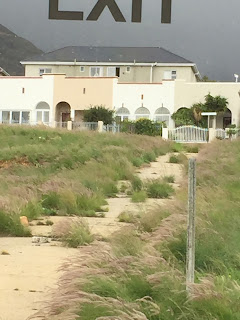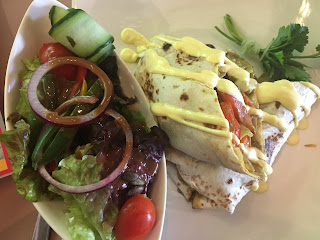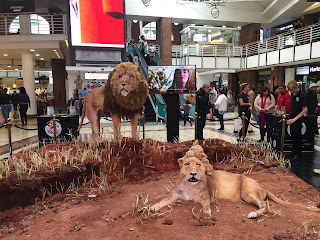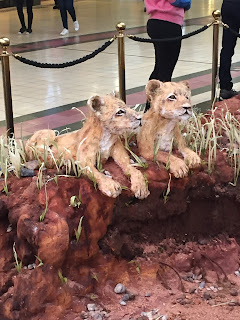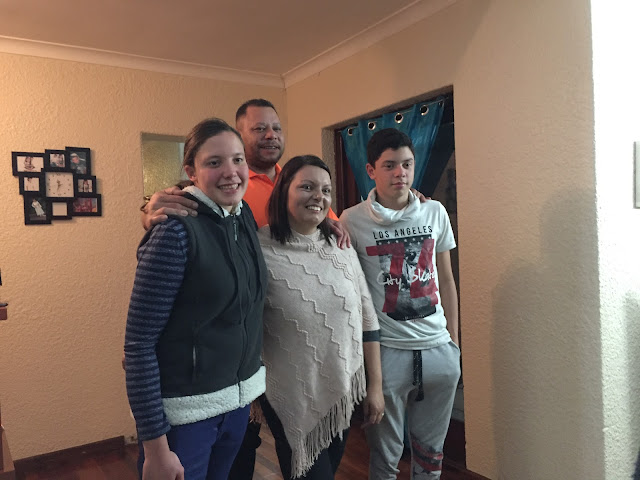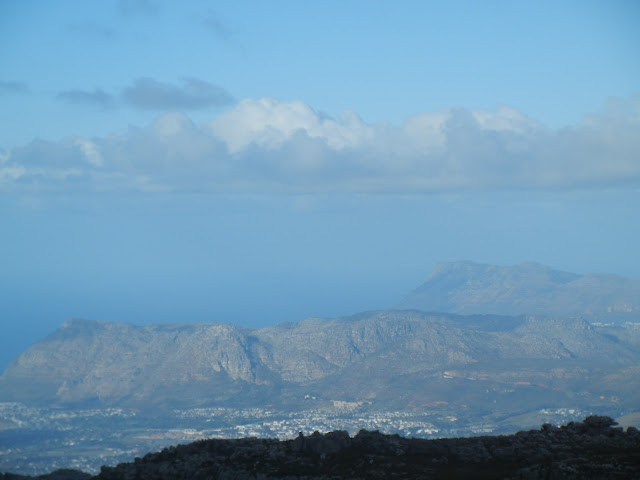We touched down in Cape Town (ie. The Mother City) on June 1, 2018.
Cape Town has staved off the worst of a water crisis.The city was facing a Day Zero scenario in 2018 in which the city would've run out of water for its residents. An historic three year drought was to blame. The hotels are doing their part to encourage guests to conserve water.
The timer that you see below was in the shower of our Cape Town hotel. It became a bit of a game to complete your shower before the timer ran out. A 4 minute shower is a small sacrifice to help such a beautiful community. Hand sanitizer was encouraged as an alternative to hand washing. The water crisis that South Africa faces really puts things in perspective regarding the American way of life and what we take for granted. You really don't miss your water until your well runs dry. The good news is that water conservation efforts by the city and residents have paid off. The city has reduced water consumption by more than half since 2015 and has stalled the “Day Zero" scenario for at least another year. Longer term solutions are being explored such as a desalination plant to convert saltwater into drinking water. At most bars, a beer was cheaper than a bottle water so beer fans could indulge in beer hydration guilt free. Anything to help the environment, right?
The signature colorful homes of the Bo Kaap area in the hills of Cape Town. Bo Kaap means "Above the Cape". The area has a large Muslim population.
A few of the sights of downtown Cape Town
Desmond Tutu used to preach at the St. George's cathedral that serves as the backdrop for this wooden arch that was erected in his honor.
The contraption on the top of this government building is a low tech solution to eliminate pigeon roosting on rooftops. A mirrored prism sits atop the platform and reflects the sun's rays as it slowly rotates. The constant light reflection deters pigeons.
Scenic Table Mountain is the backdrop for the coastal city of Cape Town.
These "umbrella pines" dot the landscape all along the mountain. They were brought over from Australia and are not indigenous. South Africa shares the same latitude as Australia so the same plants thrive in S. Africa's comparable climate.
Powerful quotes from Mandela regarding the true meaning of freedom. This was from a Mandela exhibit in a museum and resonated with Crystal and I.
“It was during those long and lonely years that my hunger for the freedom of my own people became a hunger for the freedom of all people, White and black. I knew as well as I knew anything that the oppressor must be liberated just as surely as the oppressed. A man who takes away another man’s freedom is a prisoner of hatred, he is locked behind the bars of prejudice and narrow-mindedness. I am not truly free if I am taking away someone else’s freedom, just as surely as I am not free when my freedom is taken from me. The oppressed and the oppressor alike are robbed of their humanity.
Nelson Mandela, Long Walk to Freedom
“It is not our diversity which divides us; it is not our ethnicity, or religion or culture that divides us. Since we have achieved our freedom, there can only be one division amongst us: between those who cherish democracy and those who do not.”
Nelson Mandela, Conversations with Myself
Table Mountain lookout. If you're wondering about the weather, considering our attire, it was chilly in the city bowl and downright cold on the mountain due to the heavy wind chill. Since S. Africa is in the southern hemisphere, it was winter. The average temperature during our stay was 60 - 70 degrees (F).
A beautiful view overlooking the city along the coast.
Cape Town has a lot of natural beauty and vibrant culture, but it also has an ugly past. Imagine this nightmare. You go to sleep one night as a home and land owner, but awaken the next day to learn that it's illegal for you to own land in that area of the city and furthermore you must vacate your home. This nightmare became the reality for thousands of Africans living in Cape Town. The picture below depicts life for Black S. Africans before the law went into effect. 42 Sites of Removal
This is the same street today. Homes were bulldozed and people evicted, but the site is still largely undeveloped today.
In 1965, the apartheid government declared District Six, home to almost a tenth of the city's population, a "white" area. Removals began in 1968 and by 1982, more than 60,000 people had been forcibly uprooted from their homes and relocated 16 miles away on the barren plains of the Cape Flats. The District Six museum was launched to commemorate the events of the apartheid era and preserve the memory of District Six before the removals. There were dozens of letters from former residents in the museum as well as historical documents, photographs, audo-visual recordings, etc. that highlighted this assault on civil rights.
One of the drop offs to the famed V.A. waterfront. The V.A. waterfront is a cool destination for visitors to South Africa. It has great shopping, dining, entertainment, and an art museum that was an old silo in a former life.

Many shops like this one were present at the Waterfront. This store had a large collection of one of a kind handmade pieces (large and small) for the interior and exterior of the home.
Larger than life metal wire sculpture of Mandela. Mandela's likeness and influence is present throughout the country. He continues to be beloved and remains the face of S. Africa. Literally, his face adorns the S. African Rand (ZAR).

Crystal bonded with the shopkeeper and purchased a classic silver necklace with a silhouette of the African continent. There were a lot of interesting and unique art and sculptures. Polished hand painted Ostrich eggs and polished Springbok antlers are in the window front.
We dined at this waterfront restaurant. As was generally the case, the food was delicious. The freshest seafood and local ingredients makes a world of difference. Crystal had the butternut soup and vegetarian wrap. I had fish cakes, Bobotie, and Malva pudding. 1 USD = 12 Rand so the 2 course lunch was $14 (USD) and the 3 course lunch was $16. This restaurant was comparable to a fine dining establishment in the the U.S. so the prices were very reasonable.
Butternut soup was plentiful considering it was Winter and delicious. Since it's one of Crystal's favorites, she was in heaven.
These fish cakes were delicious. They were made with Snoek fish, type of snake makerel. The fish had a tender crab like texture.
Bobotie is a very popular traditional Cape Malay dish. The dish has minced beef and raisins with an egg topping that's served over rice. I liked it and found it to be a tasty dish. The vegetarian wrap and salad was also great. Again, fresh ingredients make all the difference.
Malva pudding is a popular traditional S. African dessert. I was a big fan so much in fact that I started devouring the desert before I remembered to take a picture. This is the "good side" of what was left. Needless to say, the "after"was an empty plate.
There were restaurants that offered many options for the adventurous eater. If you were seeking a taste of African safari, then this was the place for you. At this restaurant, you could choose from ostrich, springbok, warthog, zebra, and crocodile. We preferred to look at the wildlife not eat it so we stuck to the tamer cuisine. I did try springbok (resembles a deer) which not surprisingly tasted like venison
Now this is some wildlife that I could sink my teeth into. Relax. I don't want to eat Simba. It's just an elaborate cake display inside the Waterfront mall.
Live entertainment at the Waterfront.
One of the highlights in Cape Town was having dinner with a local family, the Brooks. Shane, his wife, daughter Abigail and son Jaime were the perfect hosts. The Brooks invited us into their home and provided a delicious meal of butternut soup, salad, spaghetti, roasted chicken, grilled steak and roasted vegetables. The Brooks dinner was an option on our group tour, but I'm glad we opted to attend. It was a great opportunity to get a local perspective on the country's politics, economy, and day to day living. The Brooks are big rugby fans and Jaime plays the sport so I was able to deepen my understanding of the game through our discussions. The group photo below contains about a third of our Gate One tour group. While in South Africa, we learned about the racial classification of its residents. Native S. Africans are called "African". Africans that are mixed with non-African descent are called "Colored" and South Africans with no African descent are called "Afrikaan". The Brooks family would be considered Afrikaan. African countries, like the rest of the world outside of Europe, were colonized by various European countries. S. Africa in particular was colonized by the British and the Dutch.
Table Mountain is considered a natural wonder. We took a cable car to the top to see what all the fuss was about. The windy conditions on the mountain only allow for an average of 100 days of operation per year. The winter months incur the most non-operational days so we were fortunate to experience it during our trip.
The floor of the cable car slowly rotates so that everyone gets panoramic views.

Okay. I'm starting to understand all the fuss. Breathtaking.
If you look closely you'll see people hiking up the massive rock face of the mountain
Pictures taken from the cable car going up and down the mountain.
Pictures taken from a top Table Mountain
This rock formation is visible in many of the landscape photos of South Africa. It's called Lion's Head because it resembles the profile of a lion in the prone position. Table Mountain and the Lion's Head rock formations form the backdrop for the city of Cape Town. Do you see the lion?

The beautiful coast leading to Boulder beach.
Yes. There are penguins in Africa! Boulders beach is the home to a delightful colony of African penguins. You can obviously see why it's called boulder beach.
This little guy got lost from the beach. We encountered him on the road to the beach entrance. He didn't seem too overly concerned. It's not everyday that you see a penguin. It's even more rare to see a penguin freely mingling with the public.


After visiting the penguins, we walked a short distance to Simon's Town and found this great seafood restaurant along the coast.
Lunch was delicious. I ordered a seafood platter of calamari, Haki fish and chips (fries). I have to say the seafood was the freshest and the calamari was the best that I've eaten. The texture was very tender and tasty. Are you noticing a theme with the S. African cuisine? After having this calamari, the bar is set so high that I don't think that I'll ever be satisfied with state side calamari ever again.























